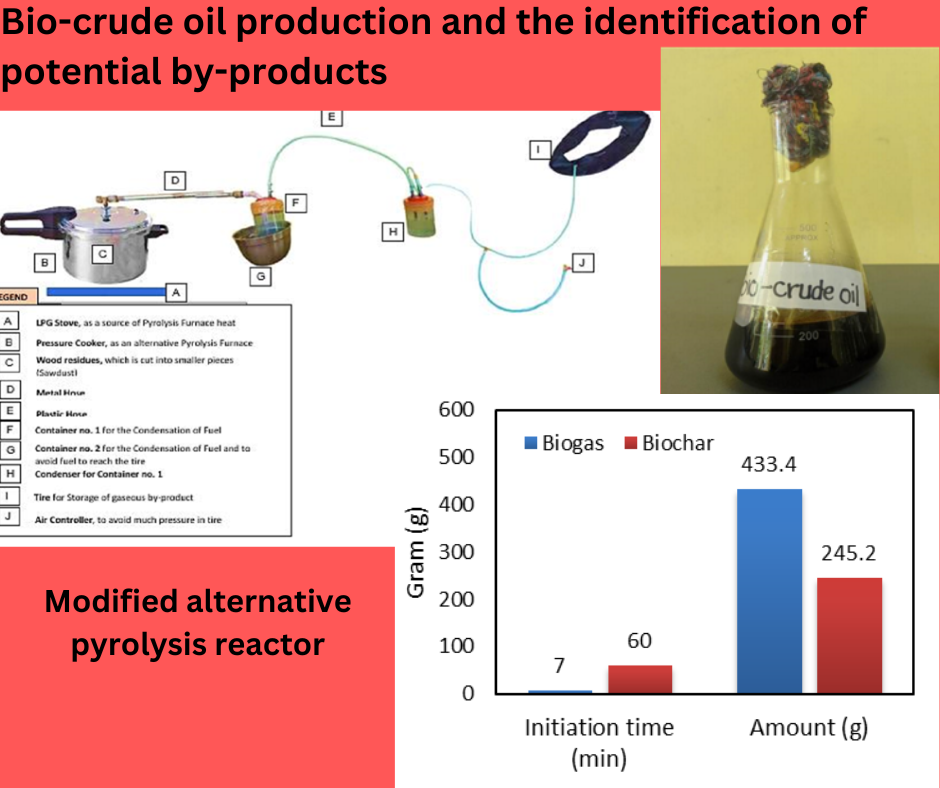
Utilization of Pili (Canarium ovatum) sawdust in bio-crude oil production and the identification of potential by-products through thermochemical conversion
DOI:
10.29303/aca.v7i2.188Published:
2024-10-31Issue:
Vol. 7 No. 2 (2024)Keywords:
Viscosity, Distillate, Thermochemical Conversion, Pyrolysis Method, By-product, Flammability and Combustibility, standardizationArticles
Downloads
How to Cite
Prado, J., Mendez, J. C. ., Brillante, F., & Ocampo, D. (2024). Utilization of Pili (Canarium ovatum) sawdust in bio-crude oil production and the identification of potential by-products through thermochemical conversion. Acta Chimica Asiana, 7(2), 464–470. https://doi.org/10.29303/aca.v7i2.188
Downloads
Download data is not yet available.
Metrics
Metrics Loading ...






 Indonesian Chemical Society, Chapter Nusa Tenggara. Jalan Majapahit 62 Mataram, University of Mataram, 83125, Indonesia
Indonesian Chemical Society, Chapter Nusa Tenggara. Jalan Majapahit 62 Mataram, University of Mataram, 83125, Indonesia





